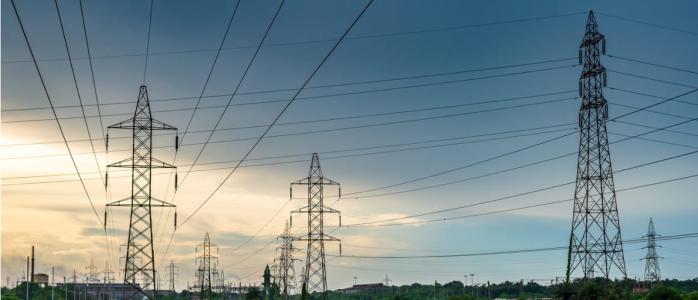



Between 25 March and 31 May 2020, India was under different phases of government-imposed lockdown to combat the Covid-19 pandemic. During this period, as distribution companies’ (discom) personnel could not visit homes for meter-reading, most households received electricity bills with estimated amounts based on previous months’ consumption. But when households received bills following the relaxation of the lockdown, several consumers, especially those in metro cities, complained about excessive bills. Even celebrities took to social media on ‘unbelievable electricity bills’. The inflated billing would have been partly a result of accumulated bills and people spending more time indoors. Several other countries also reported a similar phenomenon. A recent study in the United Kingdom reported a rise in household electricity use due to a higher number of people working from home and unstructured daily routines.
However, as per our analysis using smart meters’ data, this was not a common trend across India. The electricity consumption of many urban households in tier 2 and tier 3 towns had decreased as compared to the previous year. The relative drop in electricity use was highest amongst households owning air-conditioners (ACs). The inability to get ACs serviced, guidelines for minimal AC usage and a reduction in income were some of the key reasons for this drop.
The Council’s smart meters' project
Our team installed smart meters in around 100 urban households of Mathura and Bareilly districts in Uttar Pradesh (UP) in the summer of 2019. These single-phase smart meters capture demand and supply variables at three-minute intervals. This monitoring exercise is part of an ongoing study to investigate residential energy consumption (read our report).1. Electricity use in sample households declined during lockdowns 2 and 3
We first compared the actual electricity use of 20 sample households in May this year and the same period last year (Figure 1)1. We found that average daily consumption in May 2020 (10 units/household) was 17 per cent lower than that in May 2019 (12.5 units/household), despite a slightly higher mean monthly temperature. Further analysis revealed that household electricity use was lower during the first three weeks of May 2020, but exceeded the past consumption levels post 23 May (Figure 1). These trends may be partly explained by relatively lower temperatures during the first week of May 2020, as shown in Figure 2. However, lower consumption cannot be attributed to power cuts, which were fewer during May 2020 (43.5 minutes/day/HH) as compared to May 2019 (72.5 minutes/day/HH).
To analyse the effect of lockdown on electricity use for a larger sample, we predicted daily consumption of 48 sample households, while controlling for temperature variations2. These predicted values served as a counterfactual (baseline) for household electricity use in the absence of any lockdown.
Figure 3 shows the comparison of the predicted values with the actual electricity use. We find that the actual consumption began diverging from the predicted values from 23 April, in the middle of the second lockdown. Despite the increasing temperature, the gap between actual and predicted values increased during the third lockdown, suggesting the influence of factors other than the temperature on household electricity use. We observe that the actual consumption catches up with the predicted values during the fourth lockdown when the day temperatures breached 40 degrees Celsius. For the period 23 April -23 May 2020, we find that the average household consumption (5.7 kWh/day) was 22 per cent less than the predicted value (7.3 kWh/day).
2. The relative drop in electricity use was highest amongst households owning air-conditioners
Using the predicted consumption values, we observed that the decline in electricity use during 1 May - 20 May was steepest for families that own ACs (33 per cent or 5.25 kWh/day/HH). Families with coolers and those without AC/coolers displayed a smaller drop in demand at 21 per cent (1.8 kWh) and 17 per cent (1.1 kWh), respectively. Year-on-year assessment during the same period confirms these trends – the drop among households with ACs, coolers and those without AC/cooler is 36 per cent, 23 per cent and 18 per cent, respectively.
The variation is evident in Figure 4, which shows the average weekly load curve for the sample households grouped by appliance ownership. We observed maximum deviation during night time (8 pm – 6 am), particularly for households with ACs, suggesting relatively lower AC use this year. Nearly 80 per cent of the sample households with ACs did not use them until 15 May 2020.
3. Households cite varied reasons for the decline in electricity use
To investigate the reasons behind lower electricity consumption, we interviewed around 20 households from our sample. Figure 5 showcases the spectrum of reasons. The inability to get ACs repaired or serviced during the lockdown and the delayed use of ACs and coolers to prevent the spread of the corona virus following advisories were among the key reasons for lower or no AC use during this period.
Some households lowered their consumption to save money as their incomes were already affected. “We are surviving off our saved money, so we are trying to save every bit we can,” one of the respondents said.
Some households also cited perceived lower temperatures as the main reason. A few others reported reasons such as i) use of a new inverter AC, ii) family quarantined during the first half of May after a family member tested positive, and iii) family members spending more time together in one room. Some households reportedly used electricity as per their need, without compromising on anything.
Our assessment reflects how the lockdown affected household electricity use due to a plethora of reasons linked to socio-economic factors, logistical challenges, and misinformed decisions. While a recent analysis indicated increased electricity consumption in city households during the lockdown, many families in smaller urban areas consumed lesser electricity. Therefore, it is essential to analyse electricity usage by taking socio-economic factors into account. In the predictive context, this analysis can help us understand better the reactions of people to such events and develop a robust response mechanism for load management.
Shalu Agarwal is a Programme Lead and Rachna Pathak is a Consultant at the Council on Energy, Environment and Water. Send your comments to [email protected]
Read Part 1: How did Indian Households Respond to PM Modi’s ‘Lights Off’ Appeal?
1Here, we consider households for which data is available from May 2019. A majority of our smart meters were installed during June-August 2019.
2Using the smart meter data for the period of May 2019 to mid-March 2020, we predicted the daily household consumption for the period of mid-March to May 2020, using Facebook’s Prophet model. We controlled for temperature variations by using average day and night temperatures for Mathura and Bareilly. The prediction considers the yearly seasonality and effect of day and night time temperature on daily consumption patterns. We only considered households for which data was available for more than 200 days.






Add new comment